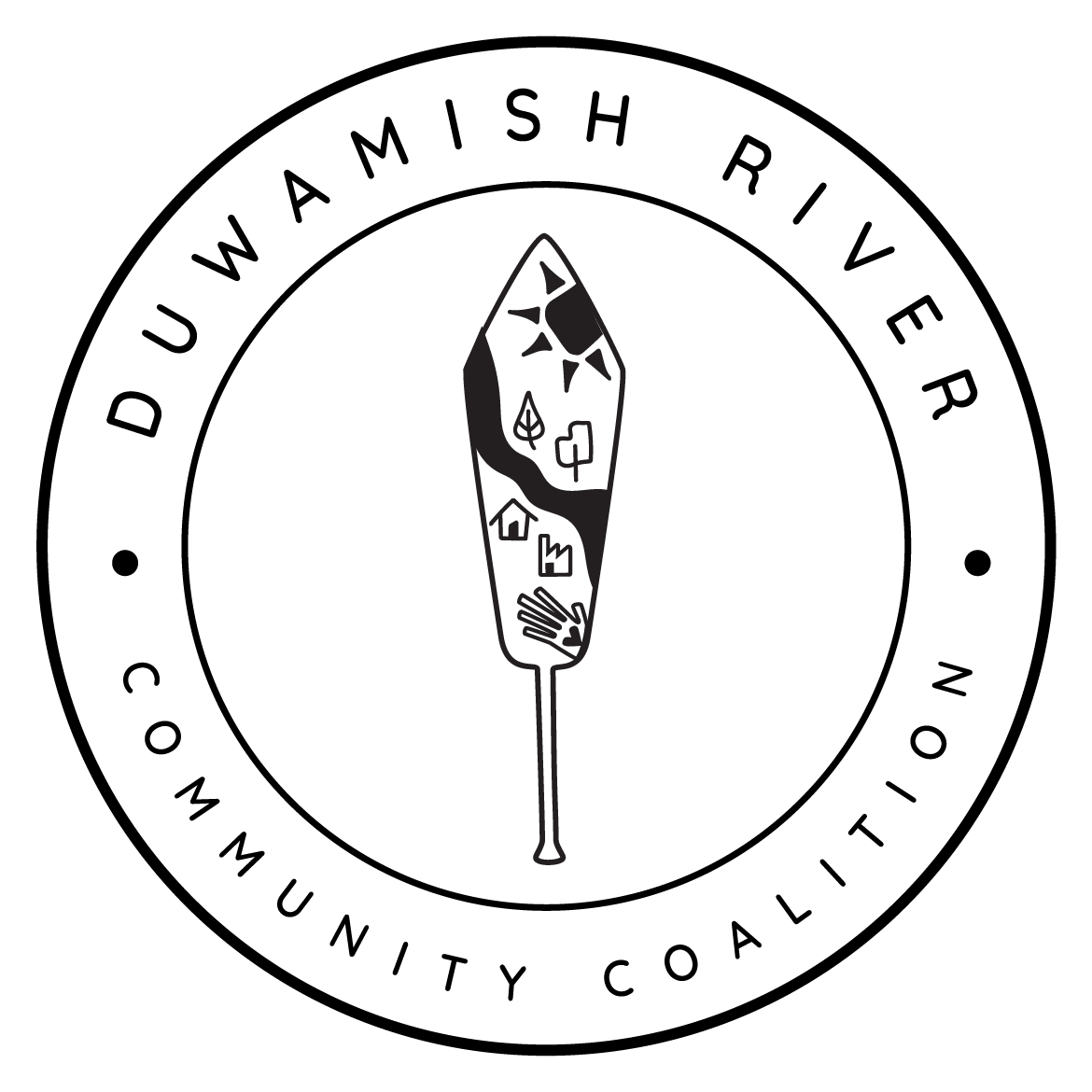Glossary
Capping – A method of controlling polluted sediment by trapping it under engineered layers of sand.
CERCLA – Acronym for Comprehensive Environmental Response, Compensation, and Liability Act. The name of a federal law passed by Congress in 1980 that requires the nation’s most toxic hazardous waste sites to be identified and cleaned up. The EPA has the role of ensuring cleanup of these sites. Includes the Superfund program.
Combined Sewer – A sewer system that transports both stormwater and sewage.
CSO – Acronym for Combined Sewer Overflow. Indicates either an event that can occur in a combined sewer during wet weather in which raw sewage is discharged into a body of water, or the structure itself that is the source of such events.
DRCC/TAG – Acronym for Duwamish River Cleanup Coalition/Technical Advisory Group. A nonprofit organization in South Seattle involved in all aspects of the Duwamish River cleanup.
Dredging – A method of removing polluted sediment from the river bottom using machines. Used when capping, Enhanced Natural Recovery (ENR), or Monitored Natural Recovery will not be effective enough.
Duwamish River – The name of the lower 12 miles of Washington’s Green River. Seattle’s only river. The river was straightened and dredged in 1913 and has been used for both industry and fishing ever since.
Early Action Area – Areas identified along the Duwamish River in 2003 based on their high risks to people or wildlife in the river. Together, they contain approximately 50% of the estimated PCB pollutant load in the river. Early Action Areas include Slip 4, Duwamish/Diagonal, Terminal 117, Boeing Plant 2, and Jorgensen Forge.
EPA – Acronym for Environmental Protection Agency. A United States Federal Government agency with, among other roles, the role of ensuring the cleanup of Superfund sites.
ENR – Acronym for Enhanced Natural Recovery. A method for “kick-starting” areas with moderate levels of toxic pollution into natural recovery by treating with a 6 to 9-inch layer of sand.
Final Cleanup Plan – A 2014 decision from the EPA that dictates the timeline and level of cleanup required for the Duwamish River, including where and how much toxic sediment needs to be removed, capped, or treated with other alternatives. Another name for the ROD.
LDWG – Acronym for Lower Duwamish Waterway Group. A group made up of PRPs including Boeing, City of Seattle, King County, and the Port of Seattle, relating to the Duwamish River Superfund site.
Monitored Natural Recovery – A recovery method involving no treatment, instead using monitoring to see if sedimentation covers the remaining pollution over time.
MTCA – Acronym for Model Toxics Control Act. A Washington State citizen-mandated toxic waste cleanup law that went into effect in 1998. Called by some the “State Superfund.”
PCB – Acronym for polychlorinated biphenyl. A toxin present in the Duwamish River.
PRP – Acronym for Potentially Responsible Party. A party potentially responsible for pollution of Superfund sites, and therefore responsible for payment of Superfund cleanup costs.
Proposed Cleanup Plan – A proposed plan released by the EPA in 2013. The plan received over 2300 public comments which were taken into account for the release of the ROD or Final Cleanup Plan.
RI – Acronym for Remedial Investigation. The purpose of the Remedial Investigation Report is to evaluate a Superfund site and explore potential risks, costs, and treatment options.
ROD – Acronym for Record of Decision. A 2014 decision from the EPA that dictates the timeline and level of cleanup required for the Duwamish River, including where and how much toxic sediment needs to be removed, capped, or treated with other alternatives. Another name for the Final Cleanup Plan.
Sediment – Layers of mud at the bottom of the river.
Source Control – The process of controlling sources of pollution to prevent contamination or recontamination of sediments.
Stormwater – Rainwater or melted snow that can flow or run off into bodies of water, often carrying with it harmful urban or industrial pollutants, such as oil.
Superfund – The name of a federal law passed by Congress in 1980 that requires the nation’s most toxic hazardous waste sites to be identified and cleaned up. The EPA has the role of ensuring cleanup of these sites. Part of CERCLA.
